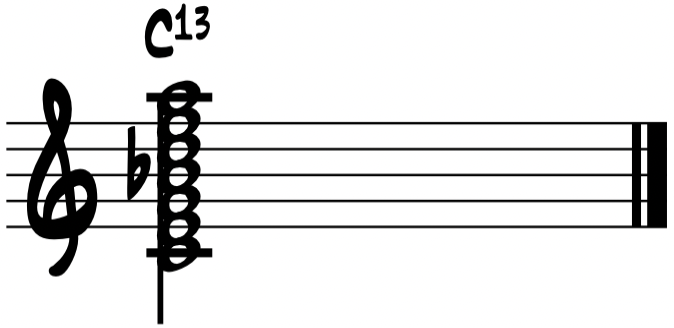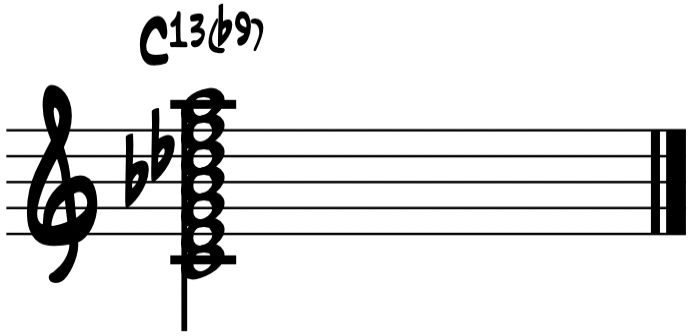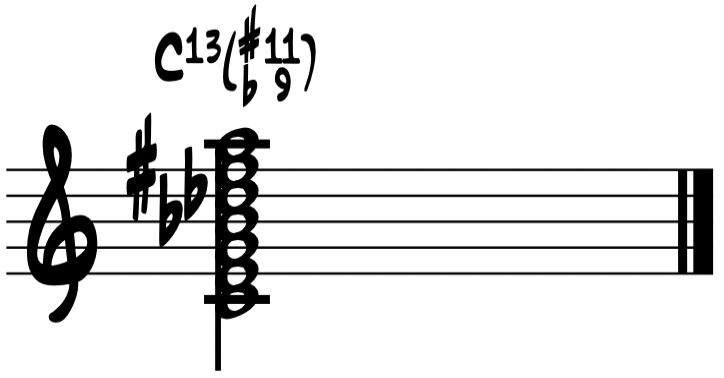
First, the chord is identified by the triad upon which it is built.

By adding a third to the triad, the new note is a seventh above the root, forming a dominant seventh chord. A "7" is added to the chord symbol. (Note that the addition of the 7th to the diminished chord creates a half-diminished chord, as opposed to a fully diminished chord, which would be all minor thirds.)

Note that "7" by itself implies a dominant (minor) 7th. A major seventh is specifically indicated as "maj7."

By adding another third to the triad, the new note is a ninth above the root, forming a ninth chord. The number on the chord symbol changes to "9."

By adding another third to the triad, the new note is an eleventh above the root, forming an eleventh chord. The number on the chord symbol changes to "11."

By adding another third to the triad, the new note is a thirteenth above the root, forming a thirteenth chord. The number on the chord symbol changes to "13."

By adding another third to the triad, the new note is now two octaves above the root. Since this does not add a new pitch to the harmony, the chord is still a thirteenth chord. The chord symbol does not change.

Any additional changes to the chord are called alterations and are notated in parentheses next to the chord symbol.


